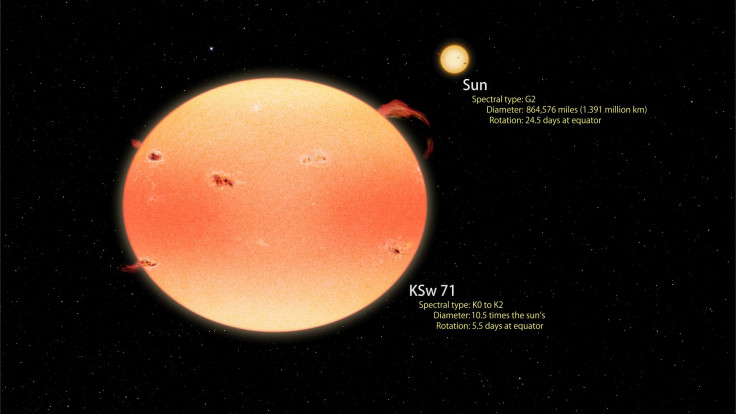Pumpkin Stars? NASA Missions Find Rare Stellar Bodies With Intense X-Ray Emissions

According to our current knowledge of the universe and the objects within it, all celestial bodies (including Earth, the moon, the sun and other planets in the solar system) rotate about an axis that corresponds to their center of mass. But there is a huge difference in the speeds at which different objects rotate in space.
And that difference in the speed of rotation can have some pretty dramatic consequences on the way different objects behave, even if they are the same sort of objects, as observations made using NASA’s Kepler and Swift missions have shown.
Astronomers using data from an X-ray survey of Kepler observations and ultraviolet/optical telescopes on Swift have found 18 rare stars that “spin so fast they've been squashed into pumpkin-like shapes” and also “produce X-rays at more than 100 times the peak levels ever seen from the sun.”
The stars are thought to have been formed in close binary-star systems in which the two sun-like bodies merged into one, a process that may have taken about 100 million years.
“These 18 stars rotate in just a few days on average, while the sun takes nearly a month. The rapid rotation amplifies the same kind of activity we see on the sun, such as sunspots and solar flares, and essentially sends it into overdrive,” Steve Howell, a senior research scientist at NASA's Ames Research Center in Moffett Field, California, said in a statement.
The most extreme example in the “pumpkin stars” is a K-type orange giant called KSw 71. It is over 10 times the size of the sun and compared to the sun’s 25 days, takes only 5.5 days to complete a rotation. The X-ray emissions from it are 4,000 times more than the solar maximum.
A paper with details of the findings will be published in the Nov. 1 edition of the Astrophysical Journal.
© Copyright IBTimes 2025. All rights reserved.





















